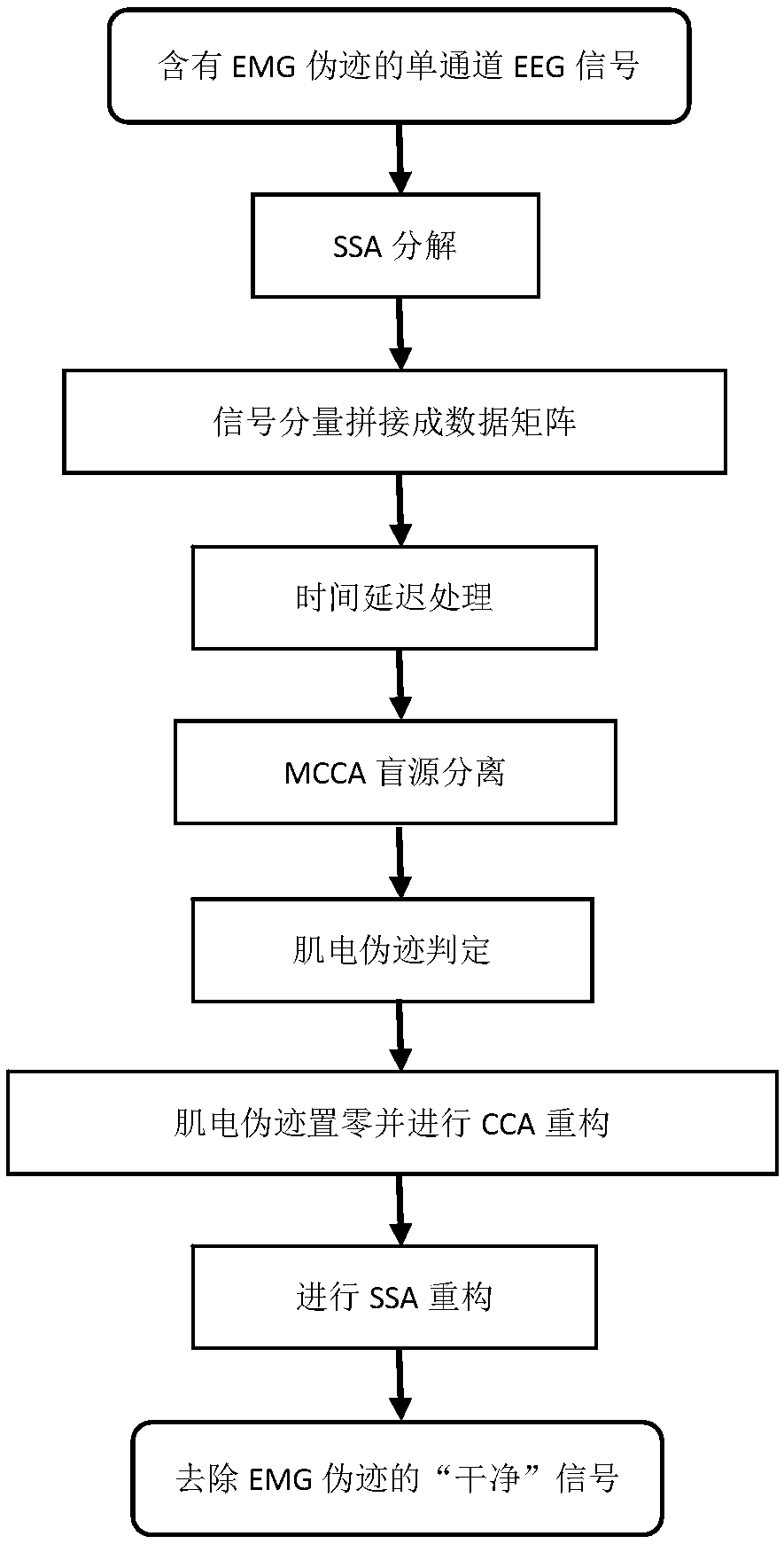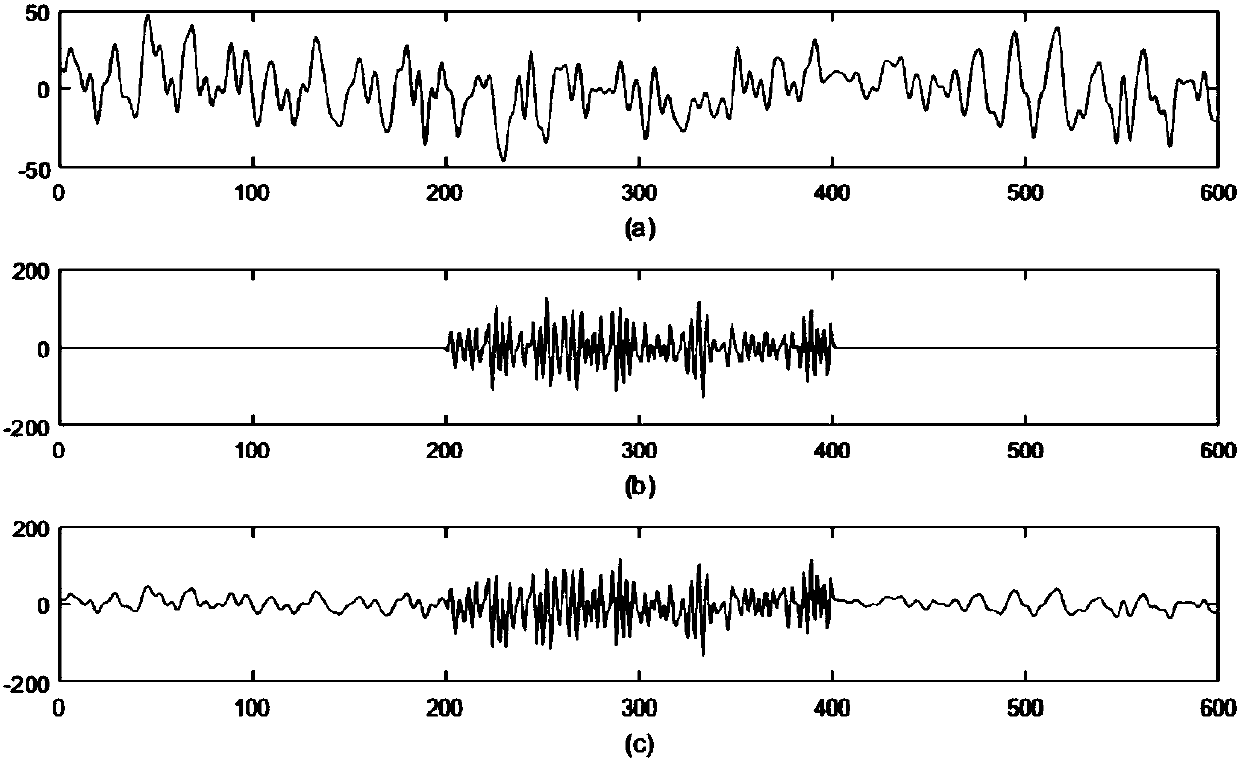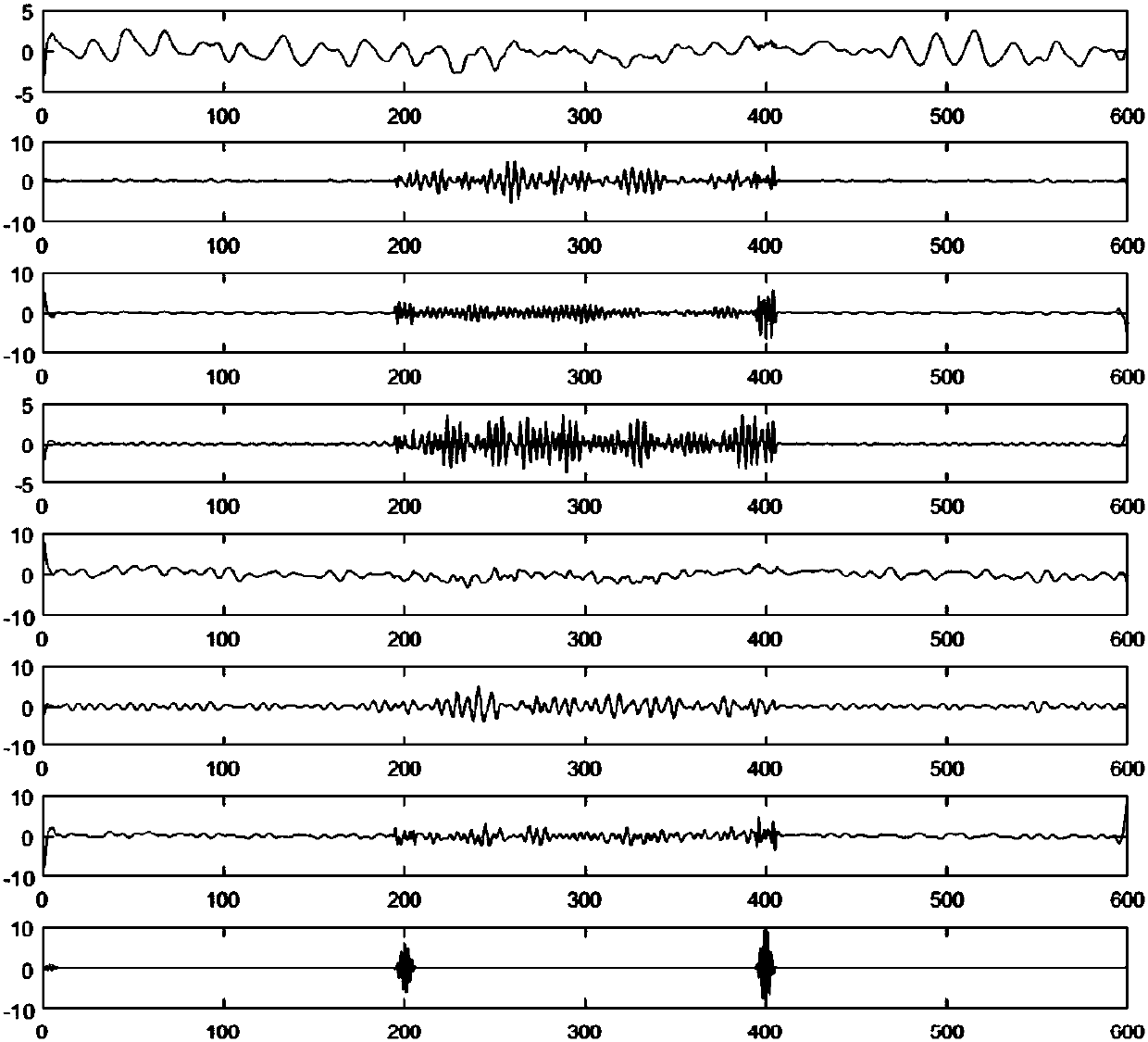Method for automatically removing muscle artifacts in single-channel EEG signal
An EEG signal, single-channel technology, used in medical science, sensors, diagnostic recording/measurement, etc., can solve problems such as data loss, loss of EEG signals, and not suitable for real-time processing, and achieve the best real-time performance and running time. short effect
- Summary
- Abstract
- Description
- Claims
- Application Information
AI Technical Summary
Problems solved by technology
Method used
Image
Examples
Embodiment Construction
[0021] Specific embodiments of the present invention will be described below in conjunction with the accompanying drawings, so that those skilled in the art can better understand the present invention, but the embodiments of the present invention are not limited thereto. It should be noted that in the following description, when detailed descriptions of known functions and designs may dilute the main content of the present invention, these detailed descriptions will be omitted here.
[0022] In this embodiment, the semi-simulated EEG signal is taken as an example, and its flow chart can be found in figure 1 , including the following steps:
[0023] Step 1: Decompose the EEG signal collected by the single-channel EEG electrode sensor through the Singular Spectrum Analysis (SSA) algorithm to obtain P signal components;
[0024] Specifically: assume that the collected single-channel EEG signal containing myoelectric artifacts is x=[x(1),x(2),...,x(T)], wherein the sequence x(t)(...
PUM
 Login to View More
Login to View More Abstract
Description
Claims
Application Information
 Login to View More
Login to View More - R&D
- Intellectual Property
- Life Sciences
- Materials
- Tech Scout
- Unparalleled Data Quality
- Higher Quality Content
- 60% Fewer Hallucinations
Browse by: Latest US Patents, China's latest patents, Technical Efficacy Thesaurus, Application Domain, Technology Topic, Popular Technical Reports.
© 2025 PatSnap. All rights reserved.Legal|Privacy policy|Modern Slavery Act Transparency Statement|Sitemap|About US| Contact US: help@patsnap.com



